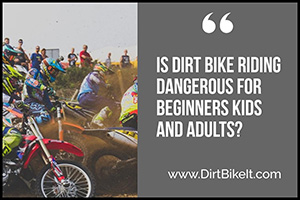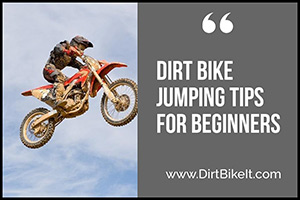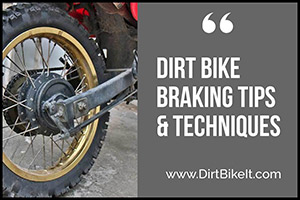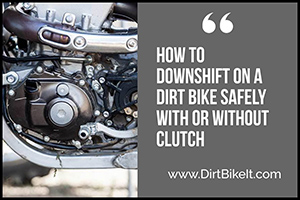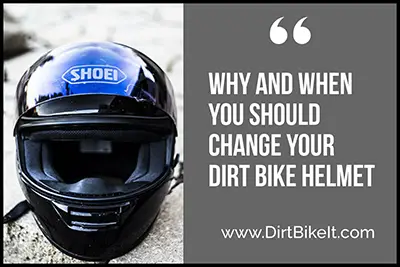Is Dirt Bike Riding Dangerous for Beginners Kids and Adults?
Are you looking for a good sport or activity you can undertake with the family? Are you considering dirt bike riding but just aren’t sure whether it’s safe enough? Are you trying to look for an answer to this very important question?
Well, in that case, you’re in luck; we are providing the answer right here. Dirt bike riding, like all activities, is not 100% safe. But you can take certain measures to eliminate many of the risks. Dirt biking can be a relatively safe activity. Here’s how safe dirt biking is, and what you can do to make it safer.
Safety is a Concern Across Many Activities
For those of you concerned that dirt biking entails risks, of course, it does. But consider this, so does going to swim at the beach, playing football and riding a bicycle. Nearly all sports and activities we undertake for recreation undertake some level of risk. But this doesn’t mean that we keep our children hauled up indoors playing video games all day. It simply means we have to calibrate the risks involved with our threshold for risks. With dirt biking, it’s also a question of the precautions you take to make this fun activity safe.
Some Facts on Dirt Bike Related Injuries
The facts we are about to give provide outstanding insights into accidents related to dirt bike riding, showing that slight changes to the ways in which we enjoy and ride dirt bikes can seriously reduce the chances of injury. The major point to take away is that if you ride on trails only, without getting into dirt bike racing, if you always put on all the requisite protective gear while riding, if you don’t drink and drive your dirt bike, and if you avoid riding dirt bikes with greater power than your age or skill level can handle, you greatly reduce the risks involved with dirt bike riding. Once more, risks are part and parcel of pretty much anything you do. Hopefully, the following statistics will aid you in deciding how you want to enjoy your dirt bike, and whether or not it crosses your personal threshold for risks.
Over half of the total dirt bike related injuries that land riders in hospitals result from racing on dirt bikes on official tracks. Out of all dirt bike use, only a tiny percentage takes place at official races or tracks. Bike racing, motocross and bike jumping are activities that are a lot more dangerous than simply riding your dirt bike on a trail.
ATV (all-terrain vehicles) related deaths have plummeted by 20% between 2006 and 2012. From 2012 until 2017 the rate has consistently remained low.
People involved in four-wheeled ATV crashes were 50% likelier to pass away as a result of their injuries than those involved in dirt bike crashes.
25%-35% of ATV related deaths involved children under 16 years old.
Alcohol has been found to be a contributing factor in nearly 50% of all fatalities.
Over 60% of deaths related to dirt biking occurred in riders without helmets. Helmets are normally widely used amongst dirt biker riders.
Over 90% of all ATV-related deaths involve male victims.
Over 25% of cases where traumatic brain injuries took place in ATV related accidents were caused by colliding with stationary objects. Riding dirt bikes in areas surrounded by trees entails risks.
Where dirt bike riding results in the breaking of a bone, there’s a nearly 30% chance that it will be a femur fracture (fracture of the thighbone). 65% of all bone fractures resulting from dirt bike riding occur below the waist.
Dirt Bikes are Safer than Four-Wheeler ATVs
The fact, as we’ve said, is that four-wheeler crashes are 50% likelier than dirt bike crashes to result in death. A trend is growing among enthusiasts of dirt riding, the trend of buying four-wheeler ATVs instead of dirt bikes, thinking the former to be safer than the latter. This simply isn’t true, and these decisions need revisiting. Ostensibly, four-wheeler ATVs are safer than dirt bikes. They are bigger, more stable and seem less likely to be involved in a crash. The statistics and the research, however, point in the opposite direction, proving four-wheeler ATVs to be far deadlier when it comes to crashes, and showing them to be a more serious cause of injuries.
The reasons why four-wheeler ATVs pose greater dangers than dirt bikes are numerous. First of all, ATVs are extremely heavy, capable of crushing drivers in case of crashes. Secondly, ATVs are physically much larger than dirt bikes, meaning that the driver won’t be thrown off free in case of a crash, but be trapped within. Thirdly, ATV drivers may drive faster than dirt bike riders, their four-wheeler giving them a false sense of confidence. The real problem of ATVs is their weight. On average, they weight between 650lbs and 850lbs, which greatly contributes to their high fatality rates in crashes. When a vehicle that size and weight rolls on top of a person with force and momentum, it is unlikely that the victim will walk away from it alive. One last reason for the high fatality rate in ATV crashes is that, according to studies, riders of four wheelers are much less likely to put on their full safety gear. Wearing helmets is much less common for ATV drivers than it is for dirt bike riders, the big ATVs creating an illusion of safety, an illusion that makes drivers feel as if they don’t need the safety equipment.
How to Make Riding Your Dirt Bike Safer
You can use the statistics provided above to make riding your dirt bike safer, for both yourself and your family, helping you safely go on great adventures on your bikes.
The first thing you can do is to actually invest in dirt bikes and not on ATVs. This will statistically speaking, keep you safer.
Your bike will probably come with an owner’s manual. Read this carefully from beginning to end. In case your bike doesn’t come with an owner’s manual, visit the manufacturer’s website for one.
Take a safety course, one that will teach you the correct skills required, skills like how to stop, steer and handle your bike. You can find state-sponsored institutes or private ones. But it’s always best to take such a course; this will help keep you safe.
Make sure you never ride on paved roads or dirt roads where cars are traveling (unless your bike happens to be dual-purpose). Dirt bikes aren’t meant to be driven on roads, highways or streets unless you need to cross a road to get to the next trail. By avoiding roads, you will eliminate a major chunk of accidents, accidents that can arise as a result of colliding with other vehicles. Besides, your dirt bike does not possess the safety features and lighting necessary for driving on a road. Ride only on designated trails and at speeds that are safe.
It’s okay to make small jumps with your bikes relatively safely but try not to ride on official tracks or races, where you will probably be required to make bigger jumps quite frequently. This will likely save you a trip to the hospital.
Follow that ATGATT policy (all the gear, all the time). Make sure you’re wearing your helmet, goggles, long sleeves, long pants, gloves, body armor, knee braces and long boots to keep your body safe from the scrapes and bruises that can be part and parcel of dirt bike riding. Make sure that your helmets fit comfortably on your head and are ‘DOT’ compliant. A ‘DOT’ label indicates that the helmet has been manufactured to meet the standards of the US Department of Transportation. Always wear helmets, no matter how good a rider you might be. Accidents can happen regardless of your level of expertise and it is better to be safe than to be sorry.
When it comes to children, make sure the bikes are the right size and strength for them. Some dirt bikes for children don’t go over 15-20mph. Make sure children under 16 are supervised when they ride their bikes; dirt bikes should not be treated like toys. Buy the right kinds of bikes, ones that suit the users’ abilities and needs. This applies equally to adults as well. Choose bikes whose size is ideally suited to the user, a bike you can retain control of on all occasions. If your bike is too large or too small it will make the jobs of steering and controlling the brakes much harder. Even if your state does not impose regulations on the type and size of bike that you are allowed to ride on, make sure that you choose your bike wisely. A good rule of thumb to follow is that you should be able to comfortably and easily reach all the controls on the bike.
Inspect your bikes thoroughly prior to each ride. Check their tire pressure, ensuring that the tires are inflated properly. Test their breaks, making sure they’re functioning properly. Also, quickly test all the bikes’ other controls, ensuring that they’re functioning properly, not broken or loose. If they are broken or loose, have them repaired before you commence riding.
Make sure that you are in control of your bike all the time. You can do this in part by avoiding conditions and terrains that are beyond what your abilities can handle, or pose great risks, conditions and terrains including steep hills, rain, snow, standing water, and mud. These may be inappropriate for every rider.
This should go without saying, but you must never ride dirt bikes when you have taken drugs or alcohol. This places not only your life and wellbeing at risk but could potentially place the lives and well-being of others at risk as well.
Never ride on trails alone. Always ride with other people. The reason for this is that in case there is a crash or an accident, you want someone else around who can alert the proper authorities and get help.
By taking these precautions, you can eliminate a lot of the risks associated with dirt bike riding and enjoy yourselves doing this wonderful recreational activity with your family, friends and loved ones.
